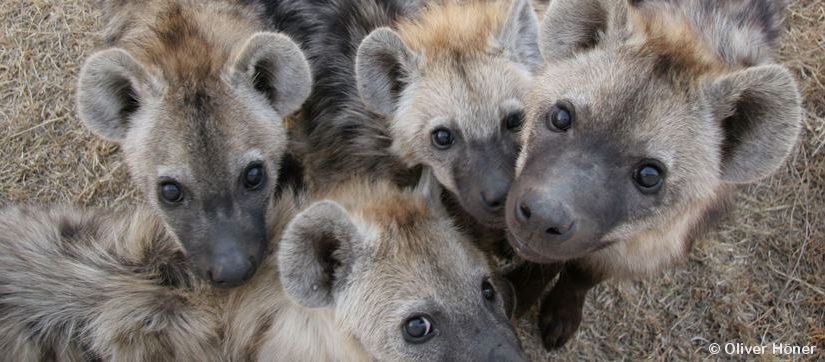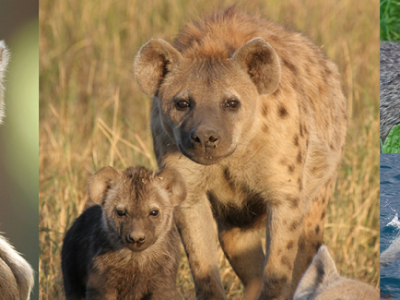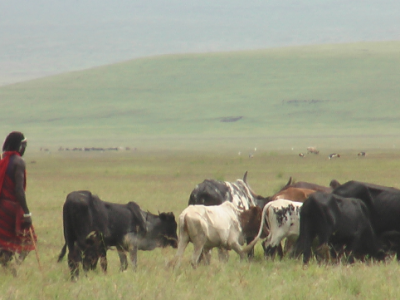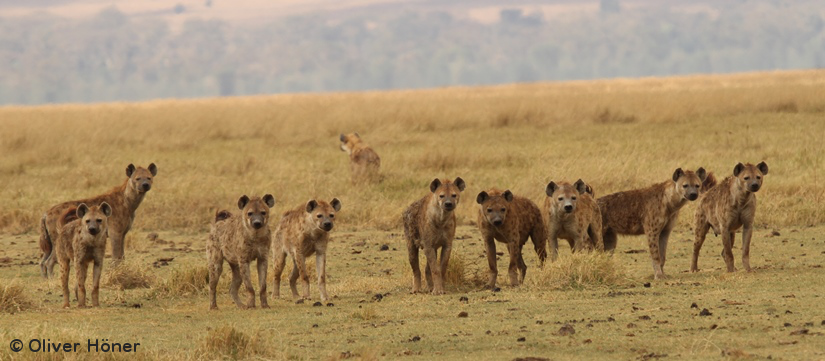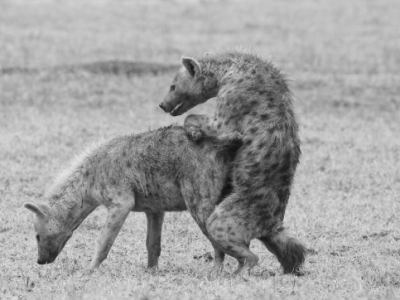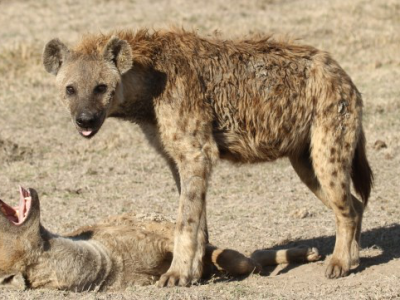By Eve Davidian and Oliver Höner
The stronger and more aggressive sex dominates the weaker sex? This simplistic view of male-female dominance relationships is common but falls short of the complexity of how dominance hierarchies are established in animal societies. In our recent study we teamed up with 18 scientists to compare male-female dominance relationships in nine species of mammals, including seven primates, rock hyraxes and… spotted hyenas! The collaborative study revealed that in female-dominated societies, male and female group members relied on submissive signals and gestures to establish and maintain dominance, whereas in male-dominated societies, aggressive behaviours prevailed.






Organising the social life in a group around a clear dominance hierarchy, where each group member knows where they stand, is an effective way to avoid escalated violence and injuries in many animal societies. These hierarchies can be derived from the outcome of agonistic interactions between group members; the individual who shows submission to another will be considered as the subordinate of the pair.
Until recently, most studies of dominance and power focused on ‘intrasexual’ hierarchies, which are derived only from male-male or female-female interactions. This implies that males and females live in separate worlds. They obviously don’t: males and females of many group-living species do compete over the same resources and frequently interact. By studying the sexes separately we are missing out on key aspects of the social and sexual life of animals. Also, because scientists working on different species often used different methods and behaviours to construct animal hierarchies, any attempt to compare patterns between species has been a blurry dream.




In a first step to facilitate comparisons, our colleagues and ourselves compiled field behavioural observations from nine mammal species. We determined the outcomes of 11,499 agonistic interactions among males, among females, and between males and females. We then applied a set of commonly used methods to rank all members of a group relative to one another and construct the ‘intersexual’ dominance hierarchy for each study group and species. Based on these hierarchies, we then calculated the degree of female dominance over males using five different indices.


With our collaborators, we found that the rank order of individuals in the dominance hierarchy was the same irrespective of the methods used and that all indices of female dominance were well correlated with each other. These results are very encouraging because they indicate that the hierarchies and resulting degree of female dominance that are inferred from these methods and indices are robust and comparable. Another very neat result is that our data confirmed that intersexual dominance varies along a continuum from strict male dominance (in chacma baboons) to strict female dominance (in Verreaux’s sifakas) and encompasses species where males and females may share power and ‘co-dominate’. Our results also confirm that the degree of female dominance may vary from one group to the other within the same species. This was particularly prominent in vervet monkeys and rock hyraxes. [discover here our findings showing similar variation in spotted hyenas!]


In a second step, we investigated whether there was a relationship between the degree of female dominance in a species and its ‘dominance style’, that is, whether individuals rely more on certain types of behaviours than others to establish and maintained their dominance relationships. For this, we first had to standardise how we labelled behaviours across the nine species.
Standardisation is key for comparisons. Each species behaves in its own, unique way and because given acts and signals may mean different things in different species – e.g., an individual putting its tail up is considered an aggressive signal for spotted hyenas whereas it is considered a submissive signal in chacma baboons. We therefore divided behaviours into four standardised categories which we then used for the analyses:
- Aggressive Acts: e.g., chase, bite, stand over;
- Submissive Acts: e.g., retreat, jump aside;
- Aggressive signals: e.g., tail up (spotted hyenas), stand up, stare;
- Submissive signals: e.g., tail up (chacma baboons), grimace, ears flat, grunt vocalisation.
Our results revealed striking differences in dominance style depending on whether the society was mostly dominated by males or by females. The higher the degree of female dominance in a species, the less frequently animals used aggression to establish and maintain their dominance relationships. More specifically, in strongly female-dominated species, such as spotted hyenas, animals of both sexes more often display submissive signals and less often use aggressive acts compared to male-dominated species, such as chacma baboons, where aggression predominates. So long to the sticky idea that spotted hyenas – in particular the females – are hyper-aggressive beasts…
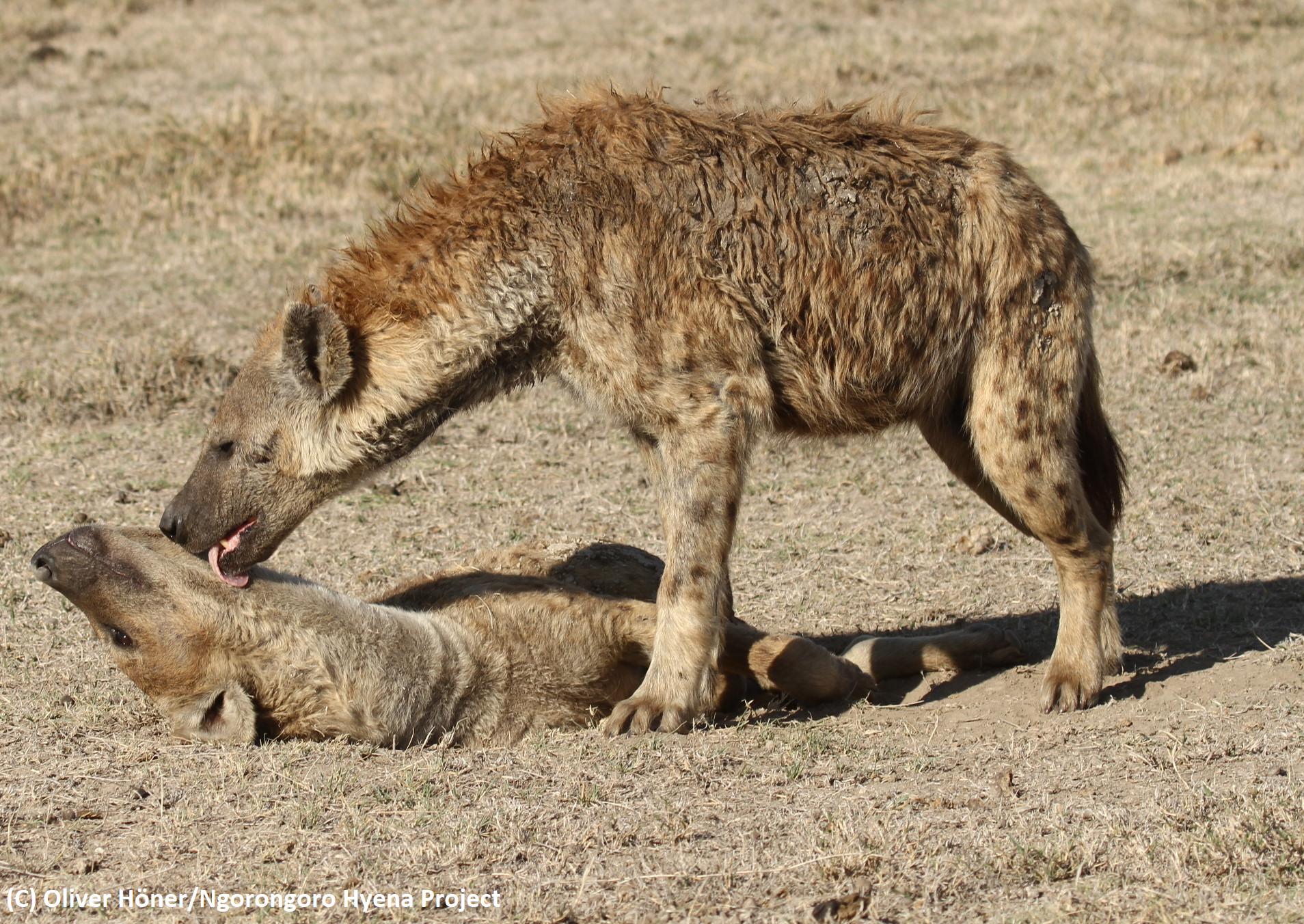

These results suggest that there are structural differences between male- and female-dominated societies, which very interesting and surely worth investigating in greater detail. With this work, we show that we have robust methodological tools to study intersexual relationships in group-living species in a standardised way. This constitutes a stepping stone towards more conceptual studies such as studies on the ecological and evolutionary causes of variation in intersexual dominance within and across animal societies.
Original publication
Kappeler PM*, Huchard E*, Baniel A, Canteloup C, Charpentier MJE, Cheng L, Davidian E, Duboscq J, Fichtel C, Hemelrijk CK, Höner OP, Koren L, Micheletta J, Prox L, Saccà T, Seex L, Smit N, Surbeck M, van de Waal E, Girard-Buttoz C (2022) Sex and dominance: How to assess and interpret intersexual dominance relationships in mammalian societies. Frontiers in Ecology and Evolution 710.
Further information
Davidian E*, Surbeck M, Lukas D, Kappeler PM, & Huchard E* (2022) The eco-evolutionary landscape of power relationships between males and females. Trends in Ecology & Evolution 37(8):706-718.
Vullioud C*, Davidian E*, Wachter B, Rousset F, Courtiol A*, Höner OP* (2019) Social support drives female dominance in the spotted hyaena. Nature Ecology & Evolution 3:71-76. *contributed equally




